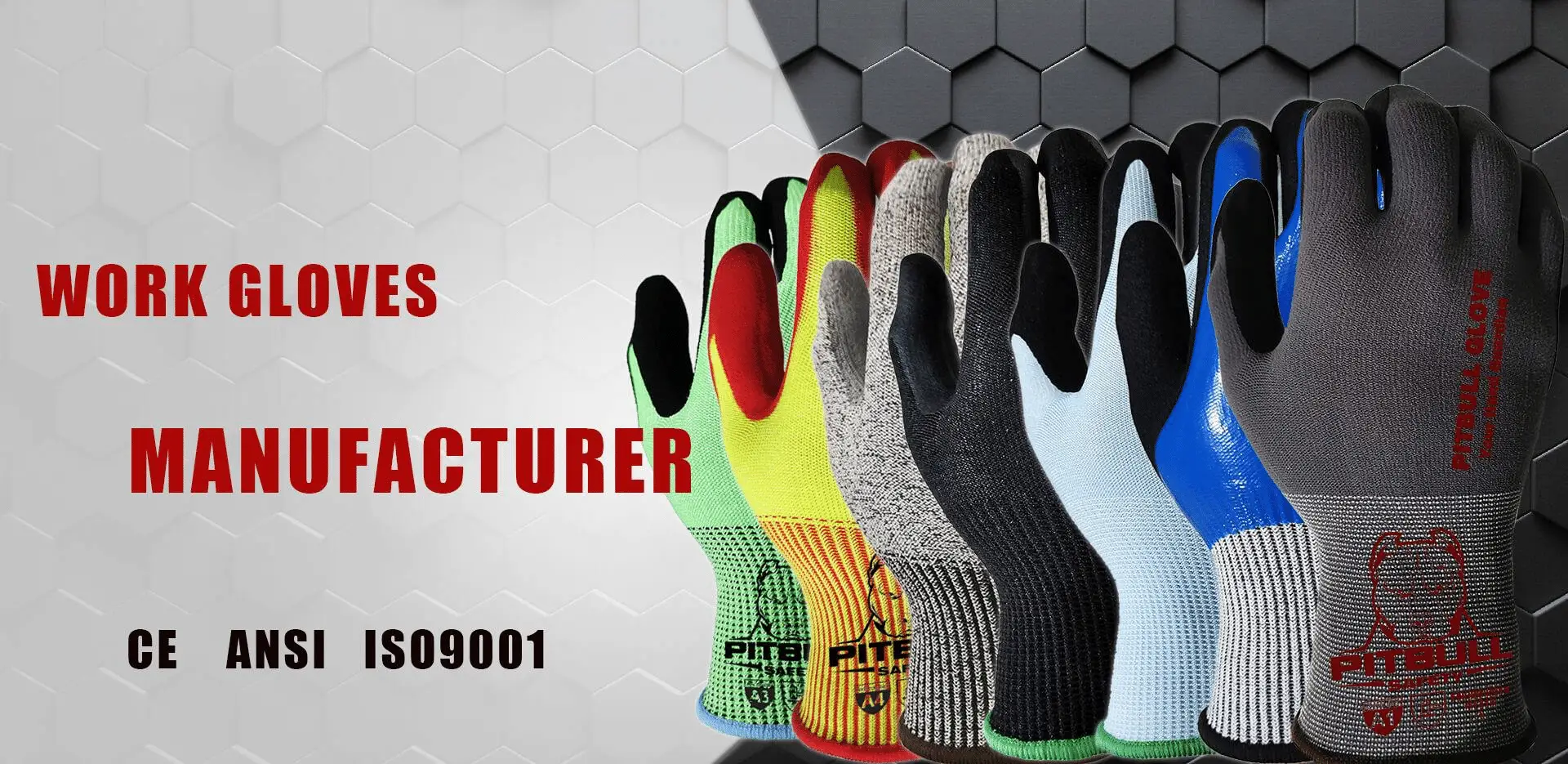
Cut resistant gloves are a type of protective gloves designed to provide protection against cuts, slashes, and lacerations. They are commonly used in various industries such as manufacturing, construction, food service, and healthcare where workers are exposed to sharp objects and equipment.
These gloves are typically made from materials such as Kevlar, Spectra, Dyneema, or other high-performance fibers that provide excellent cut resistance, cut resistant gloves are kind of knit gloves. Some gloves may also feature coatings or finishes that provide additional grip, puncture resistance, or protection against chemicals and liquids.
When selecting cut resistant gloves, it is important to consider the level of protection required for the specific task or application. Different gloves are rated based on their cut resistance, with higher ratings indicating greater protection. It is also important to ensure a proper fit and to follow the manufacturer's recommendations for the use and care of the gloves.
Do cut resistant gloves really work?
Yes, cut resistant gloves do work and are effective in reducing the risk of injury from cuts and lacerations. However, it's important to note that no gloves can provide 100% protection against all types of hazards, and their effectiveness depends on the material, design, and fit of the gloves, as well as the level and type of the hazard.
Cut resistant gloves are designed to resist cuts and punctures from sharp objects such as knives, glass, or metal. They are often used in industries where workers handle sharp tools or materials, such as in manufacturing, construction, and food processing. When used properly, cut resistant gloves can significantly reduce the risk of hand injuries and accidents. manufacturing, construction, and
It's important to note that cut resistant gloves are not the only protective measure that should be taken to prevent injuries. Employers and workers should also follow proper safety procedures, use appropriate tools and equipment, and receive proper training to minimize the risk of injury. Additionally, it's important to regularly inspect and replace gloves that show signs of wear or damage.
How many types of cut resistant gloves?
There are many types of cut resistant gloves available, and they can be categorized based on the level of cut resistance they provide, the materials they are made from, and the specific applications they are designed for. Here are some common types of cut resistant gloves:
- Metal Fiber Gloves-Metal fiber gloves are gloves made from a combination of metal fibers and other materials, such as nylon or polyester. The metal fibers are typically made from stainless steel or other alloys, and are woven into the fabric of the glove to provide a high level of cut resistance.
Metal fiber gloves are designed to protect the hands against cuts, slashes, and punctures from sharp objects or materials. They are commonly used in industries such as metalworking, automotive, and glass handling, as well as in food processing and other applications where workers are at risk of hand injuries.
The use of metal fibers in gloves provides several benefits, including:
- High level of cut resistance: Metal fibers are extremely durable and provide a high level of resistance to cuts and punctures.
Lightweight and comfortable: Metal fiber gloves are lightweight and flexible, providing good dexterity and comfort for the wearer.
Heat resistance: Some metal fibers, such as stainless steel, have high heat resistance, making metal fiber gloves suitable for use in high-temperature environments.
Easy to clean: Metal fiber gloves can be easily cleaned and sanitized, making them suitable for use in industries where hygiene is important, such as food processing.
It is important to choose the appropriate level of cut resistance for the specific job being performed and to ensure that the gloves fit properly and are in good condition before use.
Kevlar Gloves - Gloves made from Kevlar fiber, which is known for its high strength and cut resistance. These gloves are often used in industrial applications where workers handle sharp materials.
Dyneema Gloves - Gloves made from Dyneema fiber, which is one of the strongest and most durable fibers available. These gloves are often used in the food processing and cutlery industries.
Nitrile Coating Gloves - Gloves that are coated with a layer of nitrile, which provides additional grip and puncture resistance. These gloves are often used in the automotive and construction industries, and makes the gloves durability.
Stainless Steel Mesh Gloves - Gloves made from interlocking stainless steel rings that provide a high level of cut resistance. These gloves are often used in the meat and poultry processing industries.
These are just a few examples of the many types of cut resistant gloves available. It's important to choose gloves that are appropriate for the specific application and that provide the necessary level of protection.


